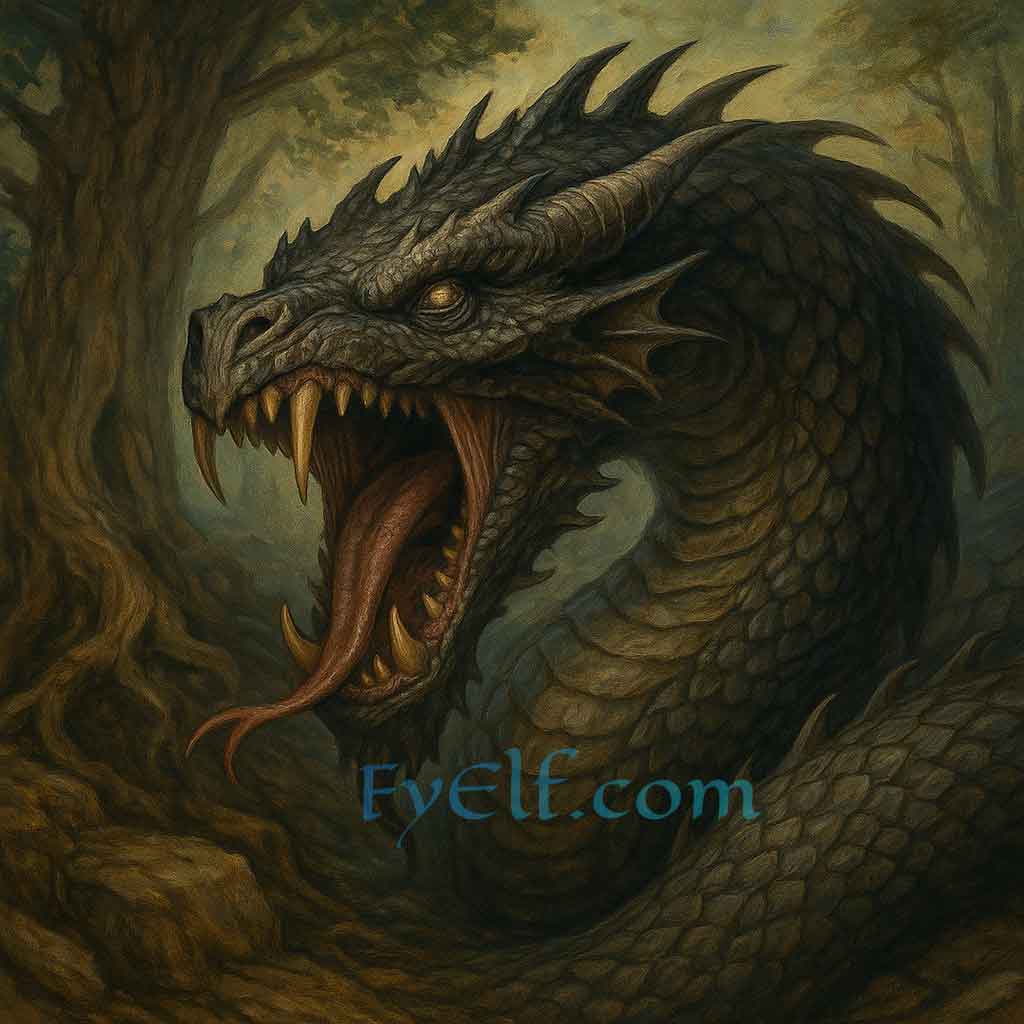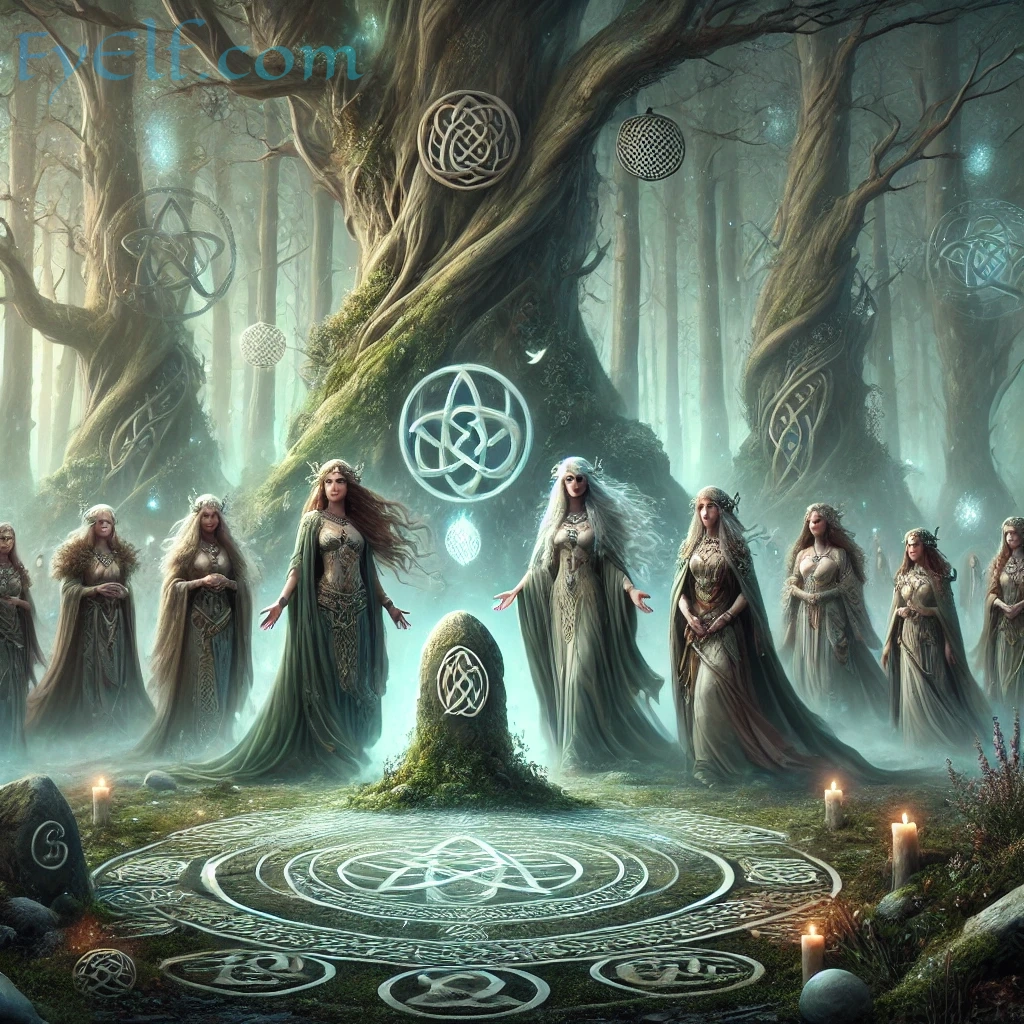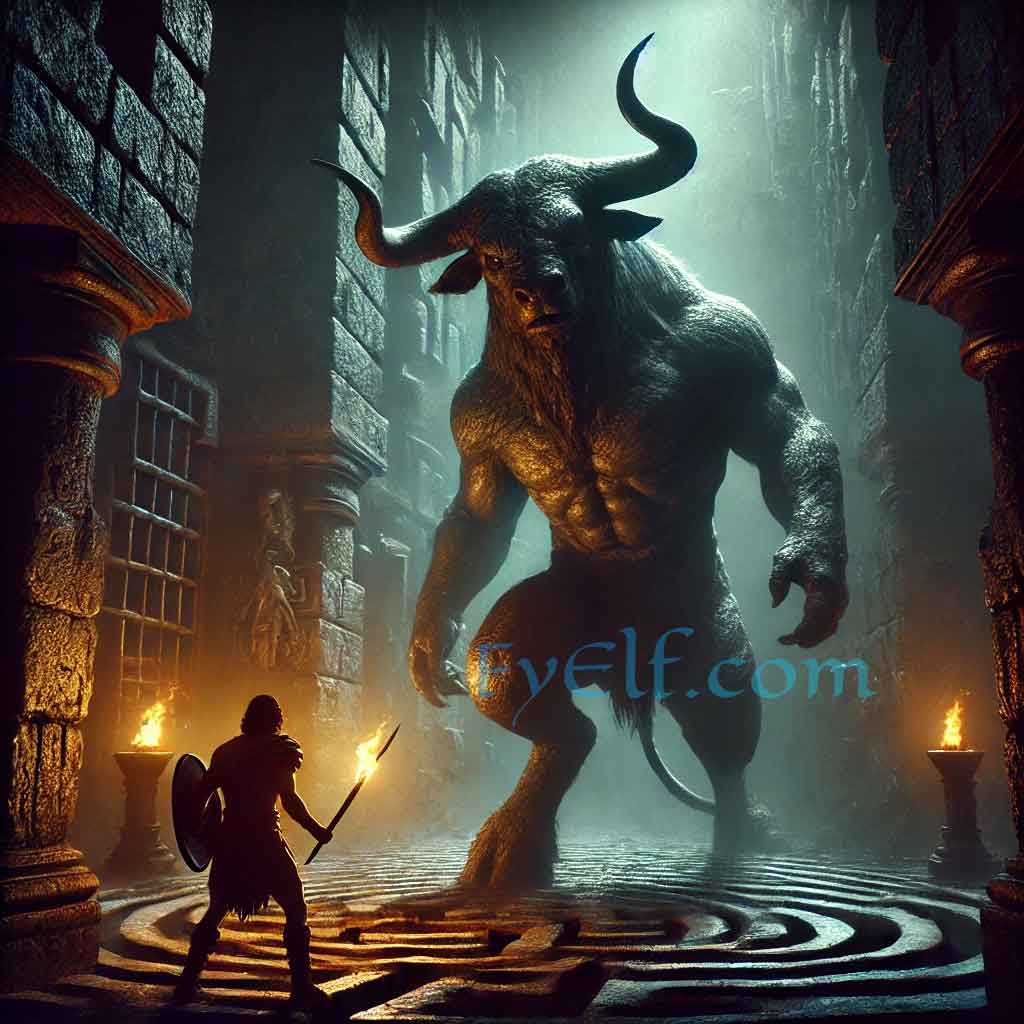I. The Gnawer at the Roots of the World
In the vast and haunting cosmology of Norse mythology, few creatures are as ominous and symbolically rich as Níðhöggr (Old Norse: Níðhǫggr), the “Malice Striker.” Dwelling in the shadowy realm of Niflheim, beneath the roots of Yggdrasil, the World Tree, this fearsome dragon-serpent embodies decay, corruption, and the cyclical nature of destruction and rebirth. Níðhöggr’s tale weaves through poems, myths, and skaldic traditions, presenting a terrifying figure that gnaws at the foundations of existence.
II. Etymology and Symbolism of Níðhöggr
The name “Níðhöggr” is derived from two Old Norse components:
- Níð – referring to scorn, shame, or dishonor.
- Höggr – meaning to strike or to hew.
Together, the name conveys an entity that metaphorically and literally “strikes with shame” or “tears with dishonor.” Níðhöggr is not merely a beast of physical might, but a being of deep moral significance—an agent of cosmic disorder and punishment for dishonorable deeds.
Symbolically, Níðhöggr may represent:
- Moral decay and betrayal of honor.
- The erosive forces of time and entropy.
- A guardian of balance, whose destruction is part of the world’s natural cycle.
III. Niflheim: The Realm of Mist and Cold
Níðhöggr’s lair is found in Niflheim, one of the Nine Worlds in Norse cosmology. Described in the Prose Edda and Poetic Edda, Niflheim is a realm of ice, mist, and shadows — the cold and deathly opposite of Muspelheim’s fire.
Here, beneath the roots of Yggdrasil, lies the spring Hvergelmir, from which all rivers flow. It is also here that Níðhöggr ceaselessly gnaws at the roots of the World Tree, threatening to bring about its decay. His persistent erosion of Yggdrasil symbolizes the ever-present threat of destruction and the fragility of order in the Norse cosmos.
IV. Yggdrasil and the Cosmic Cycle
Yggdrasil, the massive ash tree, connects all Nine Worlds. Its branches stretch into the heavens and its roots into the underworld. Níðhöggr’s role in gnawing at its roots is not viewed as villainy in a simplistic sense, but rather as a necessary counterpart to creation and growth.
This relationship mirrors the Norse worldview of balance and impermanence. Just as growth cannot exist without decay, so too must the world periodically fall, only to rise again in a new form.
- The World Tree represents life, order, and interconnection.
- Níðhöggr embodies destruction, chaos, and natural entropy.
This duality plays a crucial role in Ragnarök, the prophesied end of the world.
V. Níðhöggr and Ragnarök: The End and the Beginning

At the climax of Norse eschatology, Níðhöggr appears in the Völuspá (Prophecy of the Seeress), a poem in the Poetic Edda. After the gods fall and the world is set ablaze, a new world is foretold to rise from the sea. But Níðhöggr is seen flying over this new land, carrying corpses on his wings.
This final image is both cryptic and ominous. Scholars interpret it in different ways:
- A harbinger of lingering evil, suggesting that the new world may again fall to chaos.
- A cyclical return of destruction, reminding us that no order lasts forever.
- A symbol of memory, bearing the consequences of past sins into the reborn world.
Either way, Níðhöggr is the final shadow cast over the mythic cycle, an eternal reminder of the forces that lurk beneath the surface of all creation.
VI. The Role of Níðhöggr in Norse Ethics and Honor
In Norse society, honor and shame were essential concepts. To call someone “níðingr” (dishonorable) was a powerful insult, and such people were often shunned or punished. Níðhöggr’s association with “níð” reflects this ethical framework.
In Hel, the Norse underworld, those who committed egregious crimes—oath-breakers, murderers, traitors—were believed to be punished by Níðhöggr. This is not just mythical embellishment, but a moral warning embedded within the worldview:
- Uphold your oaths, or face eternal gnawing.
- Live honorably, or risk damnation.
- Every action echoes into cosmic consequence.
Níðhöggr thus becomes a symbol of karmic retribution, not merely a beast in the dark.
VII. Artistic Representations and Interpretations
Níðhöggr has inspired numerous visual and literary depictions:
- In Icelandic manuscripts, he’s drawn as a long, coiled dragon under the World Tree.
- In modern fantasy, he appears in video games, novels, and films, often as a representation of inevitable doom or corruption.
- Scholars and poets interpret Níðhöggr as a psychological archetype: the shadow self, inner shame, or the darker instincts within.
His image is often used to reflect the moral anxieties of a society — both ancient and modern.
VIII. Níðhöggr vs. Other Mythical Dragons
In comparison with other dragon-serpents across world mythology:
| Mythology | Creature | Role |
|---|---|---|
| Norse | Níðhöggr | Corrupts world roots |
| Greek | Python | Guardian of oracles |
| Christian | Satan/Dragon | Embodiment of evil |
| Armenian | Vishap | Storm dragon, chaos-bringer |
| Chinese | Lung (龙) | Benevolent rain-giver |
Níðhöggr is unique for being neither a hoarder of gold nor a guardian of treasure, but a cosmic antagonist, eroding the very structure of existence. This concept of serpentine chaos also lives on in cultural symbols and art, especially in Norse-inspired jewelry that channels the mystique of dragons and serpents, such as the Jörmungandr and dragon-themed Viking designs found in historical recreations and modern interpretations alike.
IX. Níðhöggr in Contemporary Culture
Níðhöggr appears today in:
- Games like God of War and Final Fantasy as an apocalyptic force.
- Books such as Neil Gaiman’s Norse Mythology.
- Academic discussions on entropy, myth, and psychological symbolism.
This lasting appeal lies in the creature’s deep-rooted significance: a force that can’t be slain, only endured.
X. The Unyielding Shadow Beneath the Tree
Níðhöggr is not a villain in the traditional sense. He is a vital part of Norse cosmology, a representation of destruction, dishonor, and rebirth. By gnawing at Yggdrasil’s roots, he maintains the mythic balance—an eternal reminder that even the greatest trees must one day fall.
In a world that cherished honor and feared chaos, Níðhöggr loomed as a symbol of what lies beneath when the roots begin to rot.




